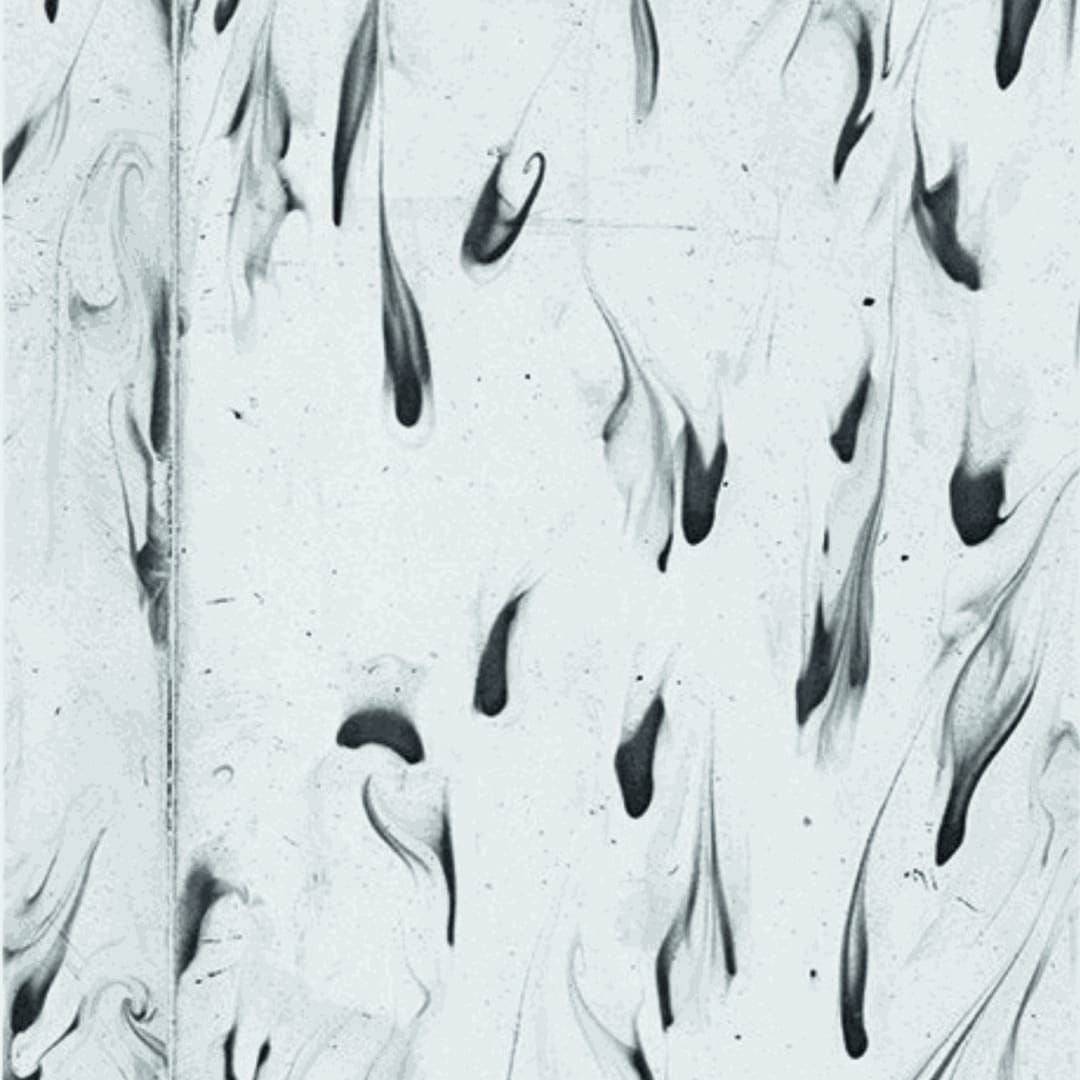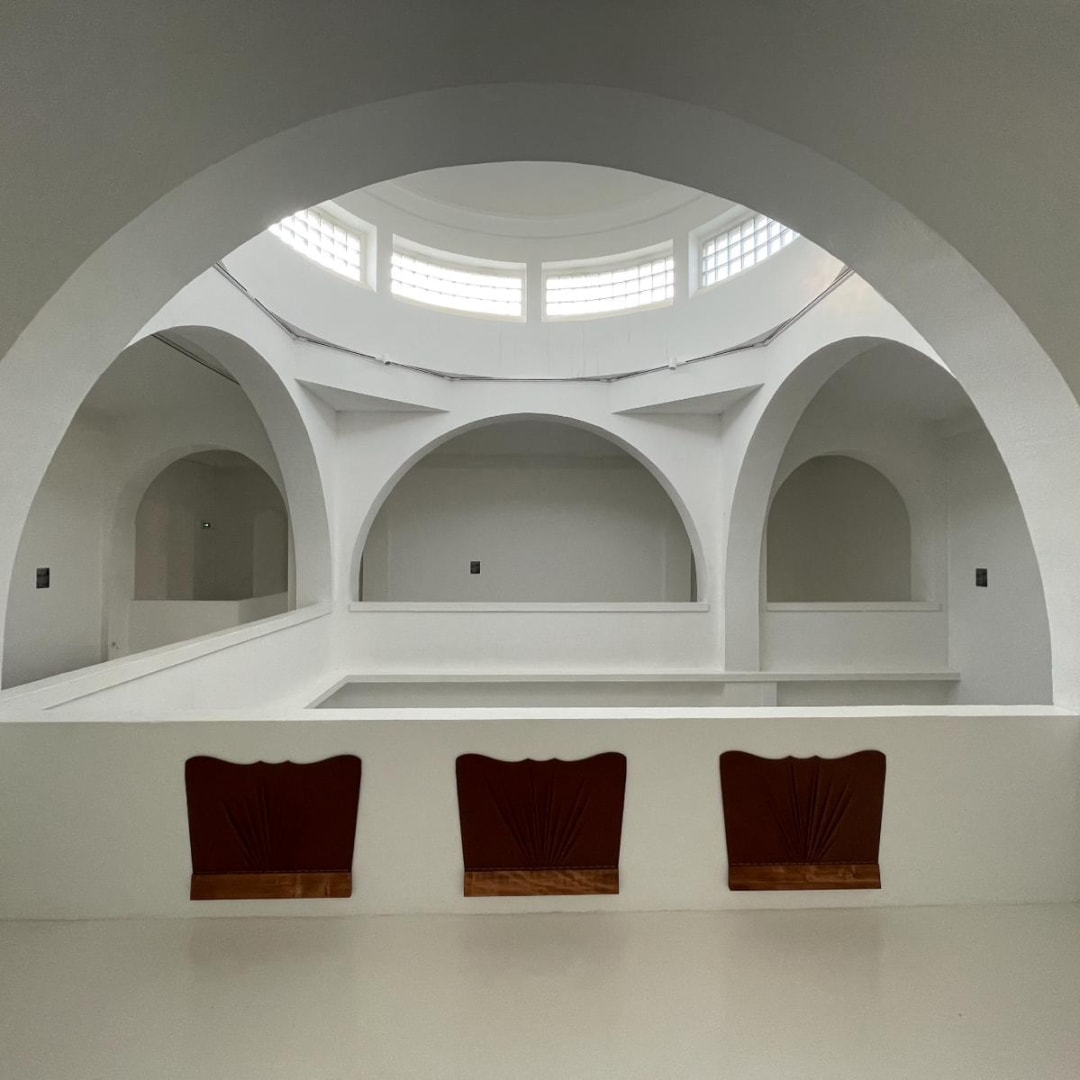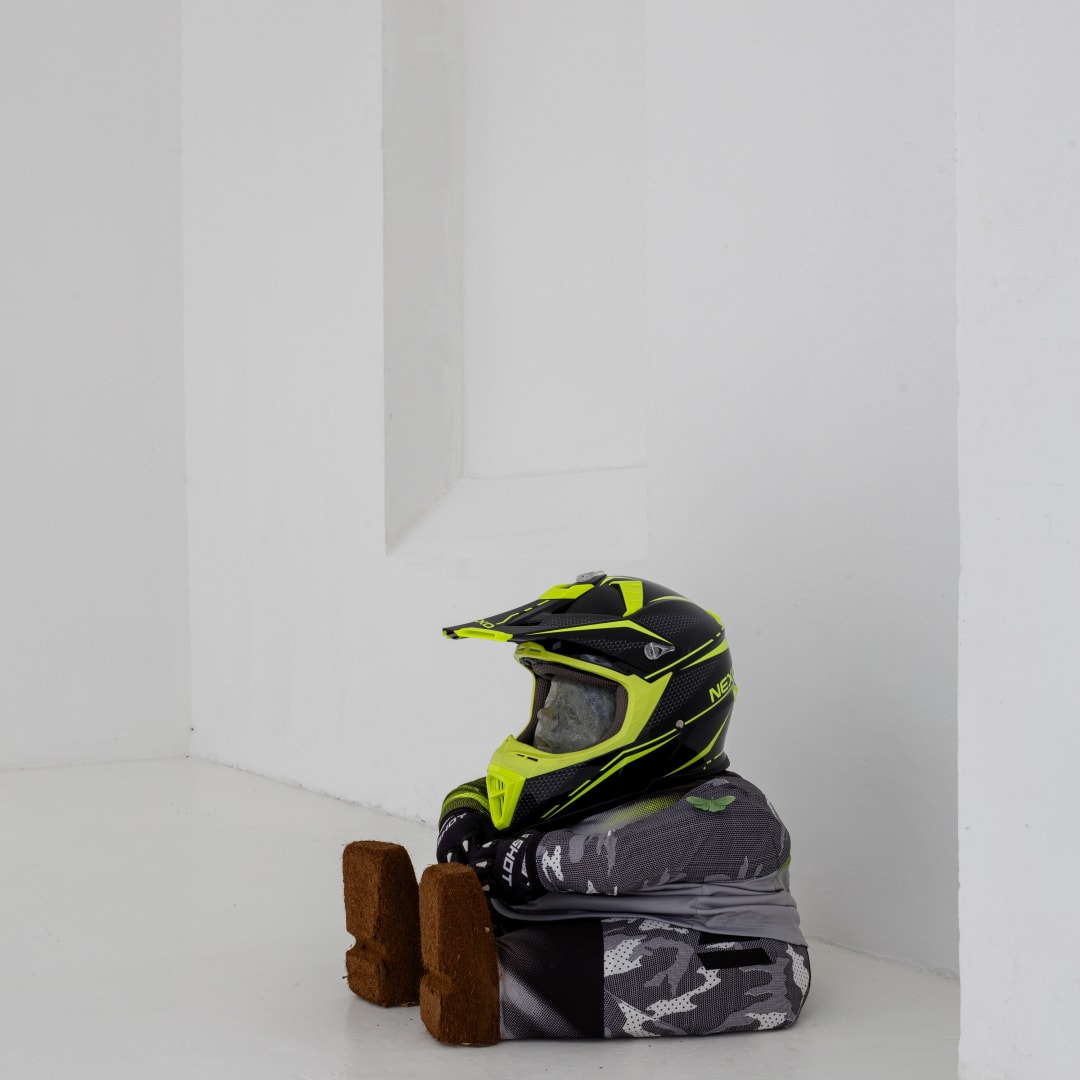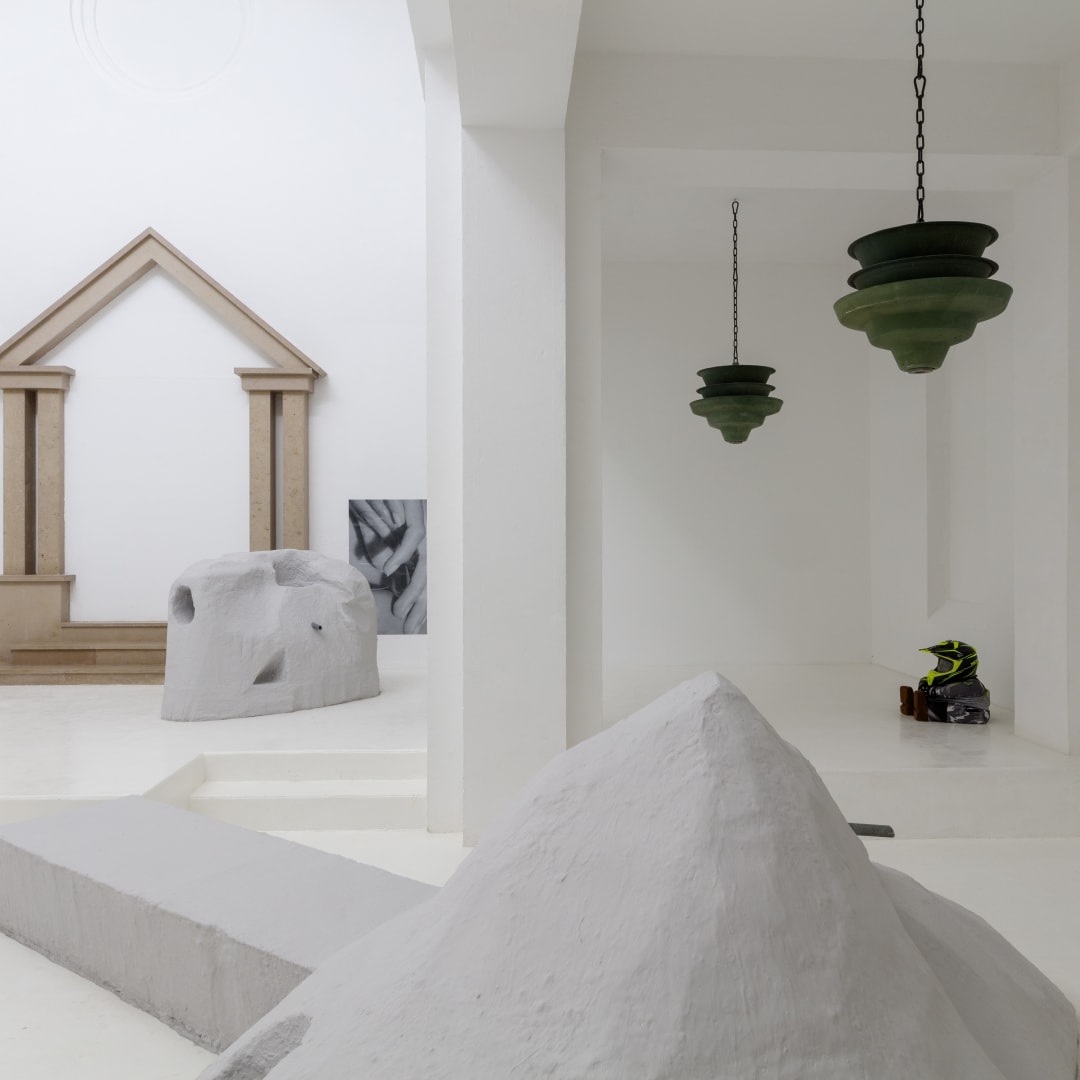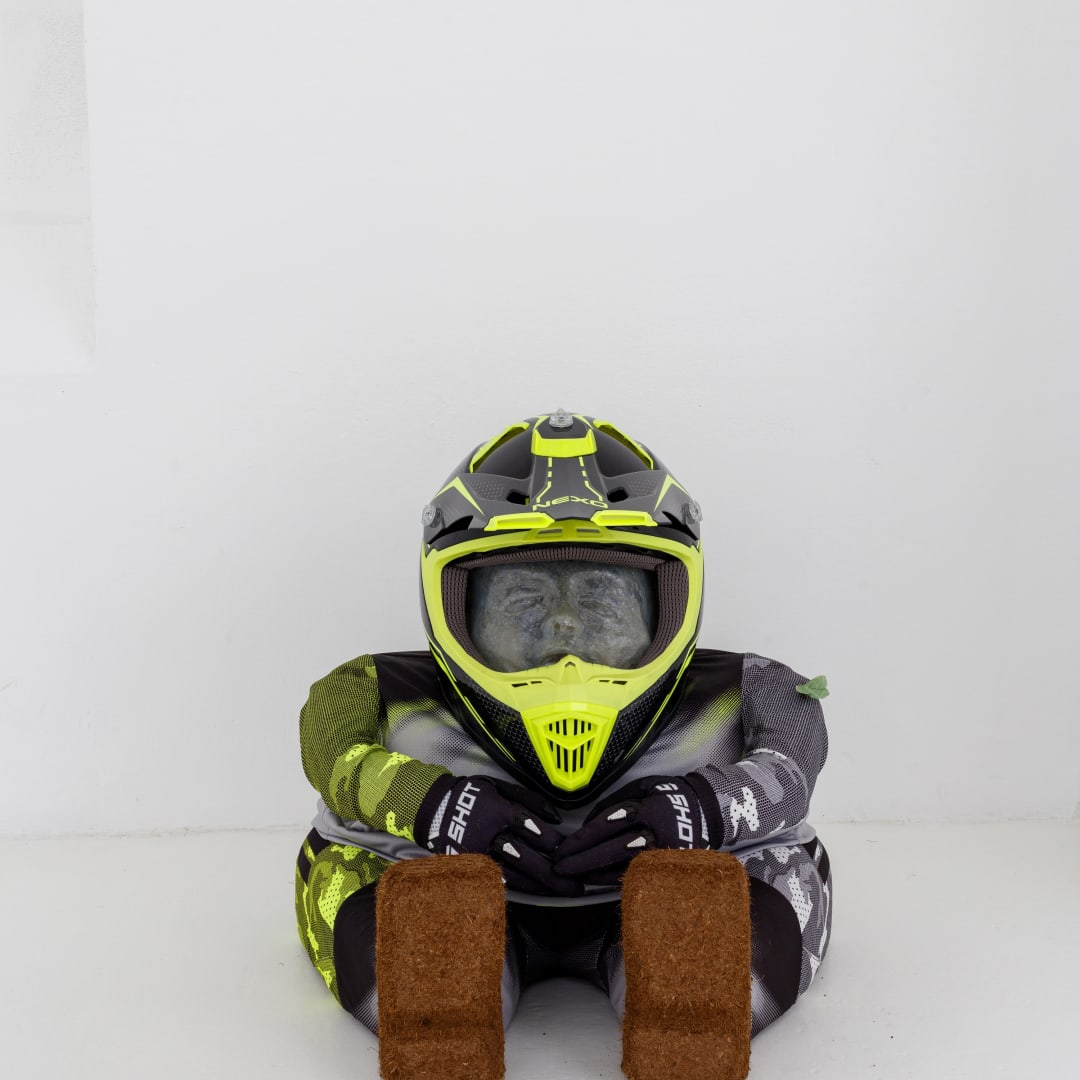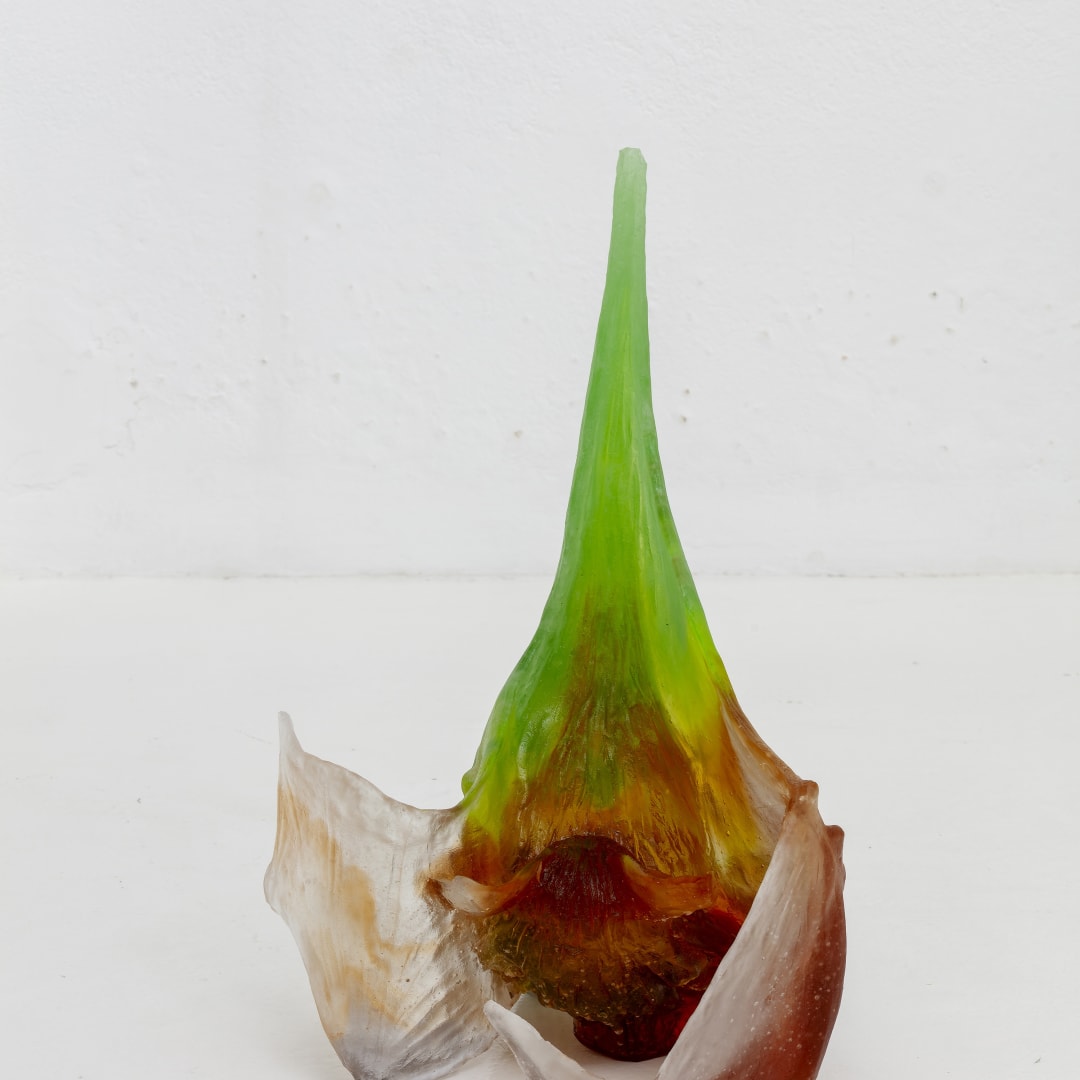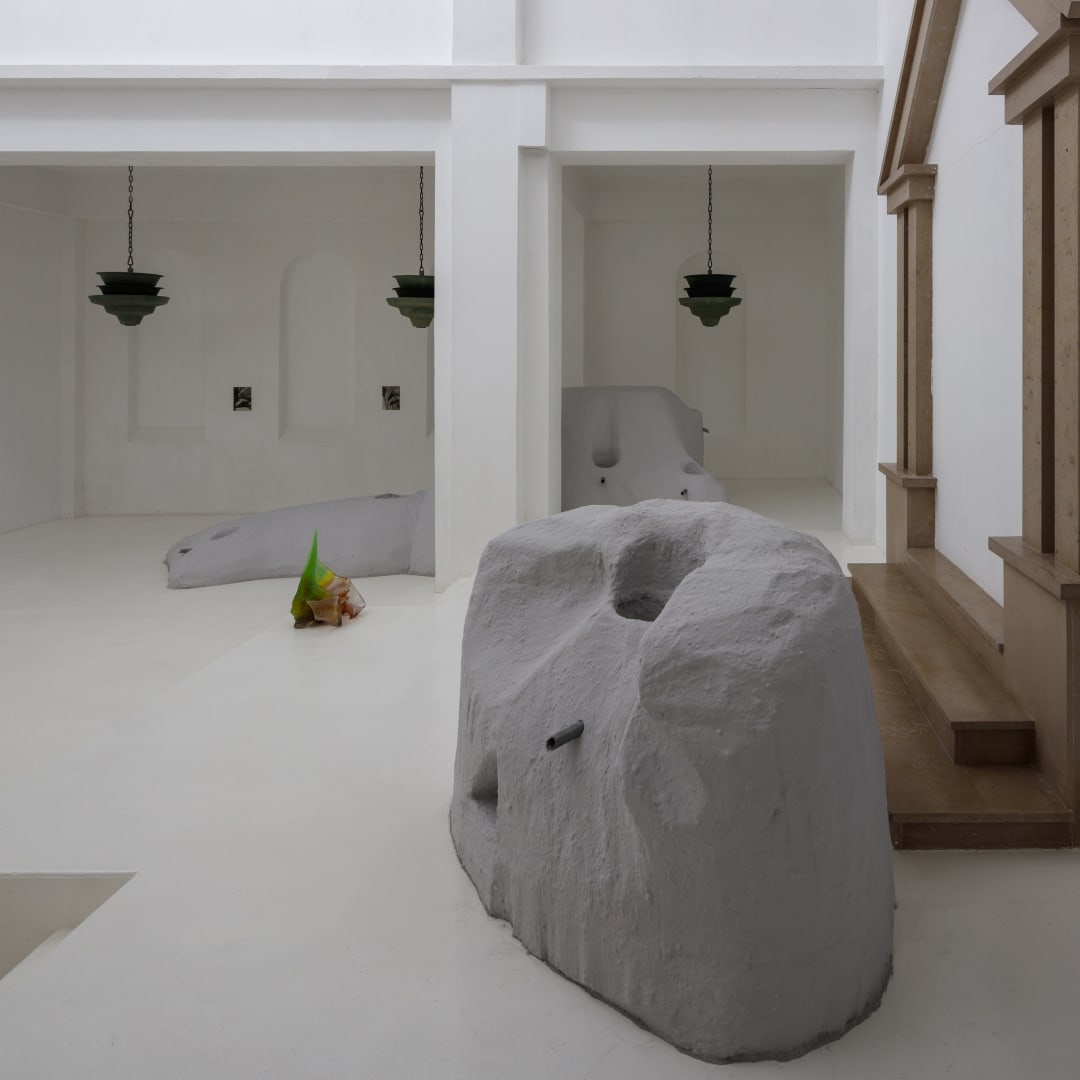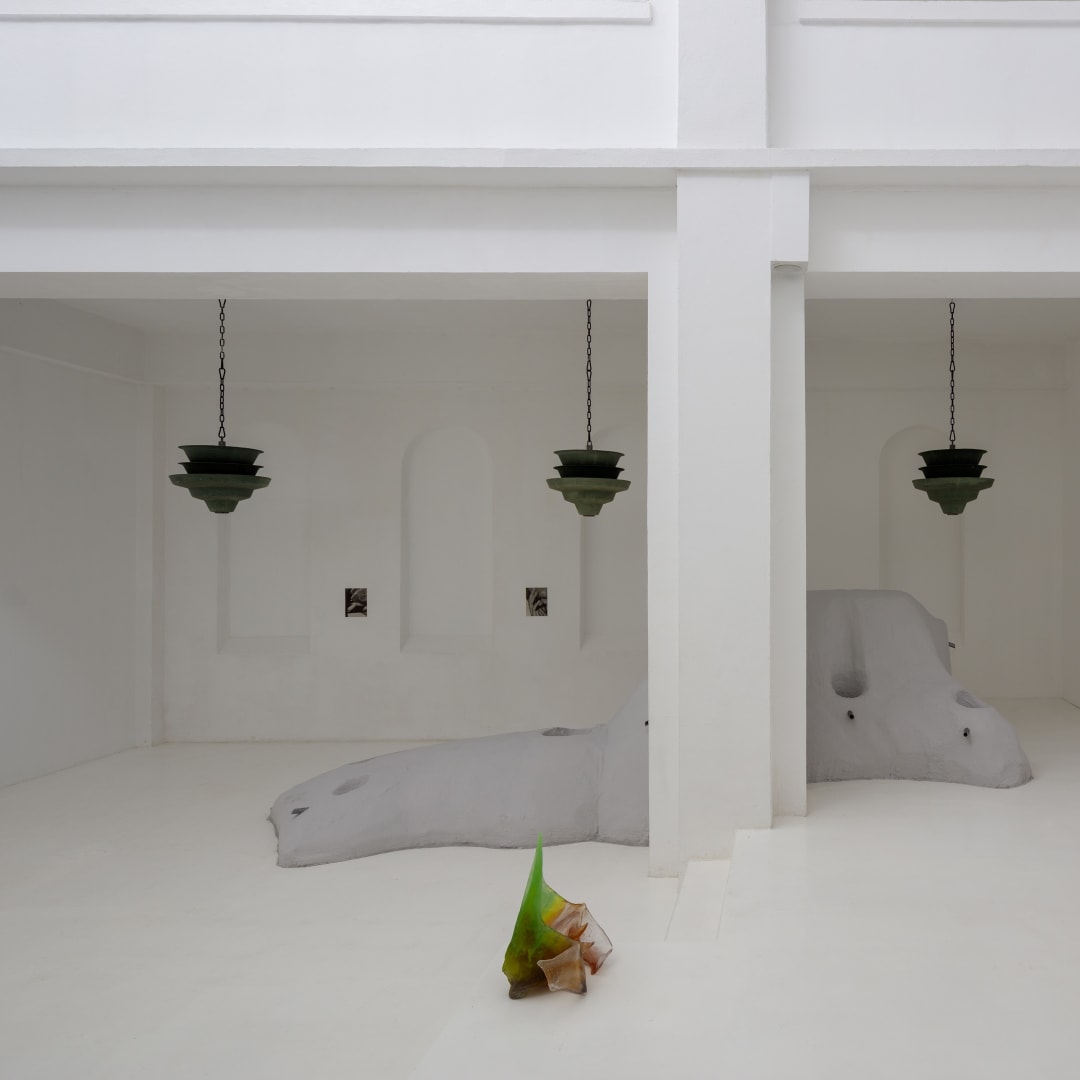JOSY'S CLUB: PIERRE-OLIVIER ARNAUD AND DENIS SAVARY
duo show
July 1 - October 1, 2023
C’est autour d’un échange d’œuvres que Denis Savary et Pierre-Olivier Arnaud ouvrent une relation et une discussion. Celles-ci se poursuivent lors de l’exposition Ballard in Albisola organisée fin 2021 par le MAMCO dans la maison de l’artiste Asger Jorn en Italie[1]. Les artistes y réalisent une œuvre en commun, une sorte de collage prenant quasiment la forme d’une sculpture pour plate-bande, en rassemblant des objets trouvés sur le site de l’exposition. Soit la rencontre d’un vase visqueux de couleur verre « Heineken », d’une guirlande de fanions gris dégradé, de carreaux de faïence noir et brun, d’un piètement de fauteuil et d’une concrétion calcaire comme origine à un projet entier d’exposition quelques temps plus tard.
Denis Savary pratique l’art de la sculpture à partir d’une approche protéiforme et trans-historique, s’intéressant au vocabulaire des formes, à leur origine et aux récits accompagnant celles-ci, façonnées par le passage du temps. Son langage visuel s’enracine dans la pratique du film que l’artiste développe dès ses débuts. Celle-ci adopte un protocole simple : enregistrer en plan fixe l’hétérogénéité du réel vu à travers le viseur d'une caméra.
Pierre-Olivier Arnaud se sert majoritairement du medium photographique pour réaliser des images dont les sujets et leurs rendus noir et blanc brouillent leurs origines géographiques et temporelles. Déployant des œuvres dont les tirages sont limités, l’artiste expérimente l’épuisement et la disparition lente des images, la perte d’aura, mettant ainsi en avant une forme de vacuité et d’entropie latente, notamment à travers des prises de vues de végétaux, d’architectures ou d’objets non identifiés.
Si Denis Savary et Pierre-Olivier Arnaud ne forment pas un duo d’artistes, ils partagent le plaisir de la dérive psycho-géographique à travers les formes et leur histoire, qu’elles proviennent de l’art, de l’architecture, du design graphique, de la littérature ou du cinéma. Ils aiment les glaner telles qu’elles s’incarnent dans l’environnement urbain, souvent de manière sauvage, générées par le hasard des circonstances. Ils pratiquent un art de l’appropriation spécifique, pour compiler et travailler des gestes artistiques ou architecturaux sans auteurs (trouvés lors d’une promenade en ville ou d’une recherche sur internet ou dans un livre), devenant la base d’un vocabulaire issu d’une modernité informelle, bricolée et réinvestie par les subjectivités, avec tout ce que cela compte de maladresses, de spontanéité et de sincérité. Empruntant autant à une modernité tardive qu’à ce qu’ils appellent un « brutalisme"[2]vernaculaire, les artistes cherchent les traces d’affects complexes et de troubles liées à une certaine manière de vivre au présent.
Dans la synagogue de Delme, Denis Savary et Pierre-Olivier Arnaud invitent les visiteur·euse·s à Josy’s Club, un espace plongé dans la pénombre, devenant le réceptacle de ces trouvailles extraites de ces multiples dérives et constituant une véritable réappropriation de l’espace urbain par l’imaginaire. Inspirée par les œuvres de J.G. Ballard telles que la Trilogie de béton ou encore Sécheresse[3], l’exposition se dévoile tel un jardin sec, dont chaque élément sculptural ou pictural serait le symptôme de ces espaces troublés. Ce paysage sec et terne reflète les variantes périphériques d’une pensée moderne planifiée, mais dans un esprit bien vivant, car il ne s’agit pas de parler de fantômes, ni de ruines ici. Les artistes mettent en avant une tendance vernaculaire bien vivace et proliférante en ce début de XXIème siècle. Sans verser dans la nostalgie, ni dans un certain fétichisme pour le modernisme, ce projet s’intéresse à sa déformation et à sa survivance dans l’époque actuelle, à son état de décrépitude avancé dont il n’existe pas d’alternative capable de le remplacer dans ce monde vivant à la fois dans un présent éternel et cultivant un certain appétit pour le rétro-futurisme. Les artistes s’intéressent à son déploiement esthétique dans l’espace urbain à partir de ce que les gens en font et créent à partir d’une base floue, dans des gestes a priori non artistique, de l’ordre du bricolage, mais contribuant à modifier et à faire évoluer les formes et l’esthétique de la ville.
It was through an exchange of artworks that Denis Savary and Pierre-Olivier Arnaud first got in touch and started a discussion. These exchanges continued during the Ballard in Albisola exhibition held in late 2021, organised by the MAMCO at the home of the artist Asger Jorn in Italy.[1] There, the artists created a collaborative artwork, a kind of collage that almost assumed the form of a garden sculpture, by bringing together objects found on the exhibition site. In other words, the encounter of a viscous vase the colour of “Heineken” glass; bunting in shades of grey; black and brown earthenware tiles; the base of an armchair; and a limestone concretion, as the origin of an entire exhibition project, held sometime later.
Denis Savary practises the art of sculpture based on a multifaceted and transhistorical approach, focusing on the vocabulary of forms, their origins, and the stories that accompany them, shaped by the passage of time. His visual language is firmly rooted in the practice of filmmaking, which the artist has developed from the outset. This practice adopts a simple protocol: recording the heterogeneity of reality in static shots, seen through the camera’s viewfinder.
Pierre-Olivier Arnaud mainly uses the photographic medium to create images whose subjects and black-and-white finish blur their geographic and temporal origins. Deploying artworks in limited prints, the artist experiments the exhaustion and slow disappearance of images, the loss of aura, thus highlighting a form of vacuity and latent entropy, notably through shots of plants, architecture, or unidentified objects.
Although Denis Savary and Pierre-Olivier Arnaud do not form a duo of artists, they share the pleasure of a psycho-geographic drift towards forms and their history, whether these stem from art, architecture, graphic design, literature or cinema. They like to fossick for them as these are embodied within urban space, often “in the wild”, generated by chance circumstances. They practice an art of specific appropriation, to compile and work on authorless artistic or architectural gestures (found on a stroll in the city or a search on the internet or in a book), forming the basis of a vocabulary derived from an informal, DIY modernity reinvested by subjectivities, with all that entails in terms of clumsiness, spontaneity and sincerity. Borrowing as much from late modernity as from what they call a vernacular “brutalism”,[2] the artists seek the traces of complex affects and ambiguous zones or grey areas, pertaining to a certain way of living in the moment.
At the Synagogue de Delme, Denis Savary and Pierre-Olivier Arnaud invite the visitor to Josy’s Club, a space plunged into a half-light, becoming the receptacle of these finds taken from various wanderings and constituting a true reappropriation of urban space by the imagination. Inspired by the works of J.G. Ballard such as the Concrete Trilogy or The Burning World,[3] the exhibition reveals itself like a dry garden, in which each sculpture or pictorial element is symptomatic of grey areas. This arid, drab landscape reflects the peripheral variants of a modern, mapped-out thought, but in a spirit that is truly alive, because it is not ghosts or ruins that are up for discussion here. The artists highlight a very lively and proliferating tendency of this early twenty-first century. Without falling into nostalgia or a certain fetishism for modernism, this project focuses on its deformation and traces within the present age; on its state of advanced decay, from which no alternative exists capable of resituating it within this world that, while living in an eternal present also cultivates a certain appetite for retro-futurism. The artists are interested in modernism’s aesthetic deployment in urban space, based on what people do and create with it, from indistinct foundations, using apparently non-artistic gestures, more akin to DIY, but contributing to modifying and evolving the forms and aesthetic of the city.
[1] Ballard in Albisola, collective exhibition organised by the MAMCO (Geneva) at Casa Jorn, (Albissola) from 3 September to 19 December 2021: https://www.mamco.ch/fr/1787/Ballard-in-Albisola
[2] Brutalism is an architectural style that comes from the modern architecture movement, which was very popular from the 1950s to the 1970s before gradually falling into decline, although various architects are still inspired by the principles of this current. It notably stands out through the repetition of certain elements such as windows, and through the absence of adornments and the raw, natural character of concrete.
[3] J.G. Ballard’s Concrete Trilogy includes Crash! (1973), Concrete Island (1974) and High Rise (1975). J.G. Ballard, The Burning World (1964).
